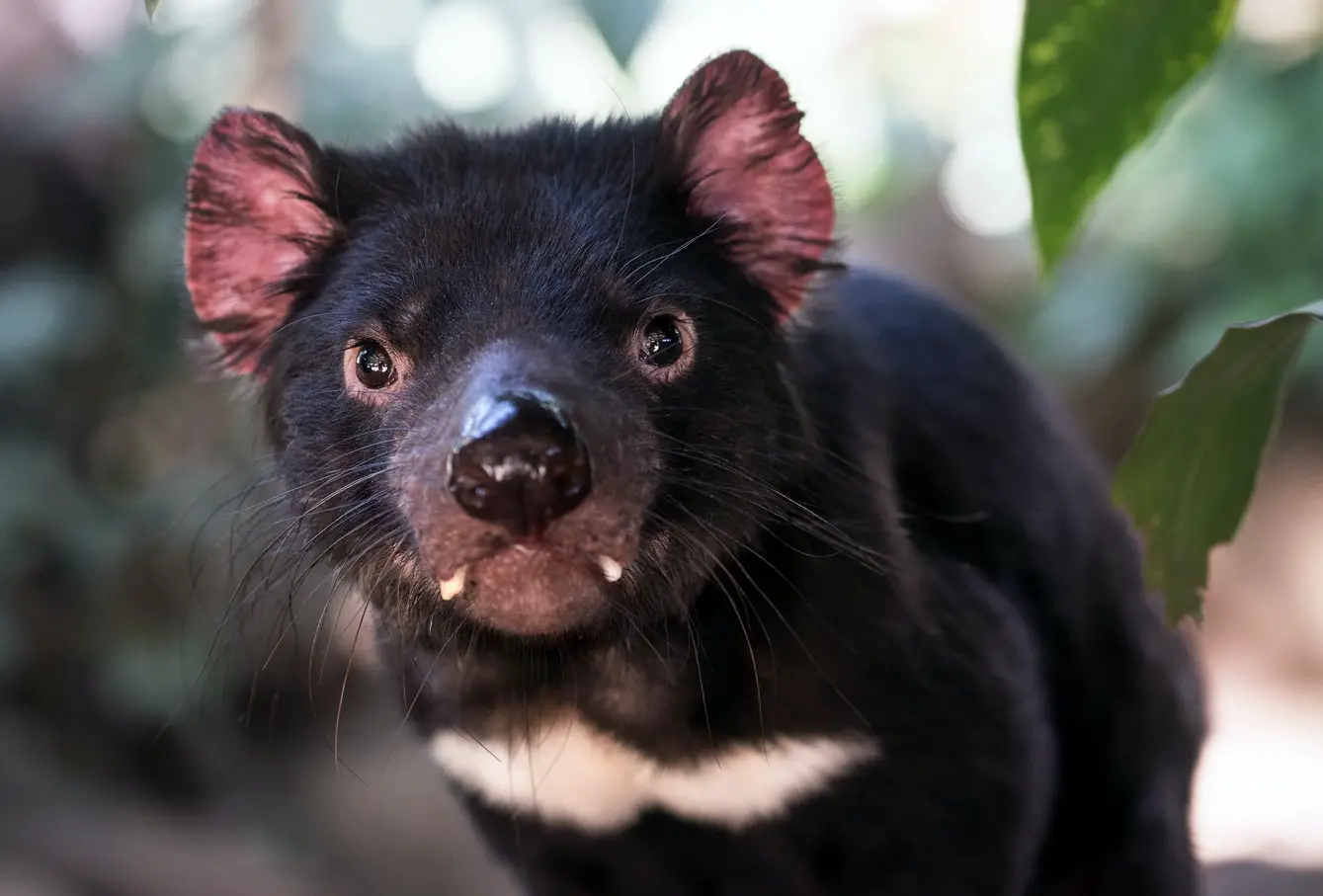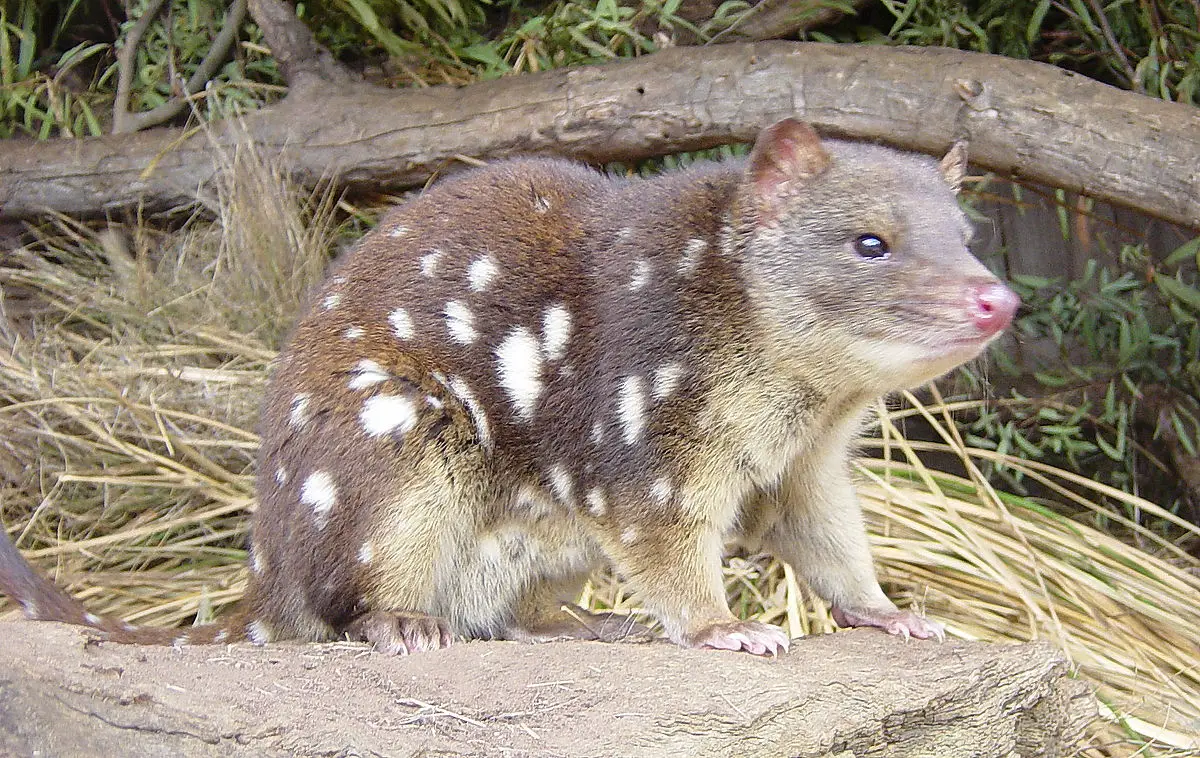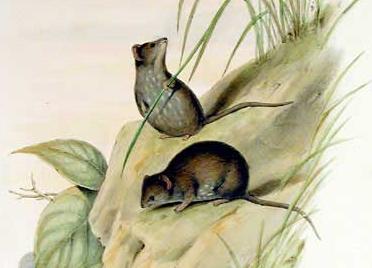
Family Dasyuridae

Ranging in size from the Tasmanian Devil with a head and body length of 65cm (22in) and weighing 9km (20lb) to the Pilbara Ningaui with a head and body length of <6cm (2in) and weighing 9.5gm (0.3oz). Little is known about many of these animals.
Features
- hairy-tailed
- pointed snouts
- teeth – lower incisors, well-developed canines, sharp cheek teeth
- aggressive hunters
- kill their prey by biting the back of the head and crushing the skull
- mainly nocturnal
Diet: prey depends on the size of the hunter: the Tasmanian Devil feeds on carrion but also on possums and wallabies while the other dasyurids live on small mammals, birds, reptiles, insects, fruits.
Members of this Family are further subdivided into four groupings (subfamilies).
Tasmanian Devil
- eats carrion mainly
- not found on mainland
Number of species: 1
Quolls

By Leonard G. (talk) – Own work (Original text: I created this work entirely by myself.), Public Domain
- medium-sized
- once known as native cats
- distinguished by white spots
- 2 other species in New Guinea
- nest in tree hollows or in burrows
Number of species: 4
Mulgara
- lives in arid, sandy areas
- dig burrows
- don’t need water
Number of species: 1
Ampurta
- distribution restricted to southwest QLD and northeast SA
Number of species: 1
Kaluta
- lives among spinifex tussocks of Pilbara region of WA
Number of species: 1
Kowari
- lives in gibber deserts of central Australia
- dig burrows
Number of species: 1
Dibblers

By John Gould – John Gould, F.R.S., Mammals of Australia, Vol. I Plate 39, London, 1863. http://www.museum.vic.gov.au/bioinformatics/mammals/images/Ant_apic.htm, Public Domain
- finds insects in leaf litter
- climbs trees to find insect prey
- also eats nectar
Number of species: 2
Pseudantechinuses
- tail acts as a storage area for food; the tail becomes fatter when food is abundant and thinner during drought
Number of species: 4
SubFamily Phascogalinae
Antechinuses
- claws on front paws
- search leaf litter for insects and small lizards
- males live for only a year; females may survive for 2 years
- found in a wide range of habitats
Number of species: 7
Phascogales
- skilful climbers
- will eat birds and small mammals as well as insects
Number of species: 2
SubFamily Sminthopsinae
Commonly called marsupial mice.
Dunnarts
- fold of skin on stomach acts as a pouch
- rest during the day in burrows
- live in a wide range of habitats
- 2 of the 19 species are also found in New Guinea
- mainly eat insects and spiders
- don’t require free water
- some store energy as fat at the base of the tail
- can become torpid when no food available
Number of species: 19
Kultarr
- very long, brush-tipped tail
- found in desert areas of central Australia
Number of species: 1
SubFamily Planigalinae
The smallest marsupials.
Planigales

By John Gould – John Gould, F.R.S., Mammals of Australia, Vol. I Plate 44, London, 1863. http://www.museum.vic.gov.au/bioinformatics/mammals/images/Ant_macu.htm, Public Domain
- some are desert dwellers and don’t require free water
- forage and nest in cracks and crevices – protection from environment and predators
Number of species: 4
Ningauis
- found in arid areas
- obtain moisture from their insect prey and by licking dew from leaves
- during day, shelter in hollow logs, borrowed burrows, or undergrowth
Number of species: 3